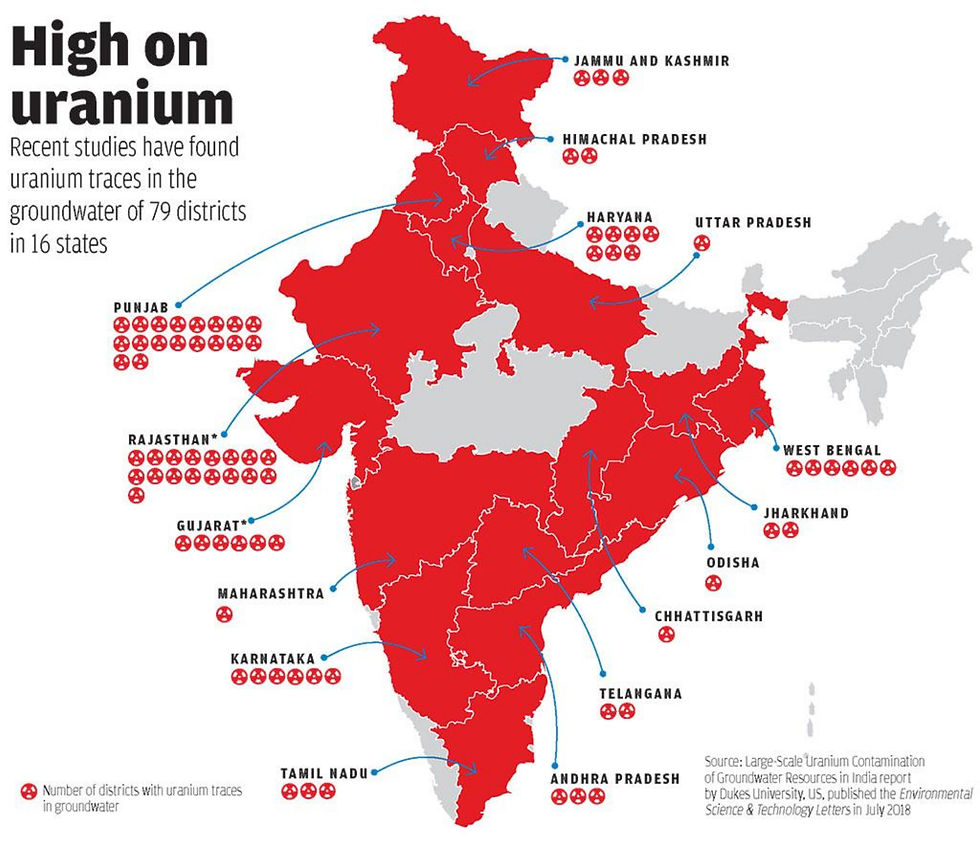Tainted Taps
- connect2783
- Jul 10, 2023
- 2 min read
Updated: Jul 18
Recent incidents in Koppal, Raichur, and Belagavi have raised alarms about water contamination, with hundreds hospitalised due to polluted water. Groundwater contamination by uranium and other harmful substances is a growing issue in several states, including Punjab, where the impact on public health is alarming. As water quality continues to deteriorate, how aware are we of the risks lurking in our drinking water?

In Karnataka’s Koppal, Raichur, and Belagavi districts, a distressing chain of events has been unfolding over the past few days. At least 6 people, including 3 minors, lost their lives after consuming contaminated water. Hundreds of others experienced symptoms like vomiting, diarrhoea and fever, necessitating hospitalisation.
A study by the Central Ground Water Board done in 2019 showed that out of the 14,377 groundwater samples analysed across 18 states, approximately 409 samples showed uranium levels exceeding the permissible limit. Further, a Lancet study from the same year revealed that an estimated 14 lakh people in India died prematurely due to water contamination.
Uranium, arsenic, and chromium are substances that are considered to be the most worrying contaminants for water. Uranium can be found in certain types of soil and rock, like granite. Human activities such as mining, excessive use of phosphate and nitrate fertilisers, and over-extraction of groundwater all play a key role in mixing uranium with water.

Punjab is amongst the worst affected states, grappling with uranium contamination in its groundwater.
The Groundwater Yearbook 2021-22 revealed that nearly 29% of wells in the state exceed the permissible limit of 30 parts per billion (ppb) for uranium concentration.
Groundwater in Punjab’s Malwa region has been declared unfit for consumption due to high levels of uranium and arsenic, contributing to alarming cancer rates in the region. Apart from Punjab, other states with a significant percentage of wells exceeding 30 μg/l of uranium levels include Haryana at 14.4%, Uttar Pradesh at 9.2%, and Rajasthan at 8.6%.
Ongoing research is exploring effective remedies and better techniques for improving the water quality. These measures include removing contaminants from extracted groundwater using activated filters such as alumina. Additionally, reducing contaminant levels within the aquifer itself and blending with potable water have proven effective. Promising research is also underway in the field of bioremediation by utilising plants and microorganisms.
Have you considered checking the quality of your drinking water?
Yes
No
Comments